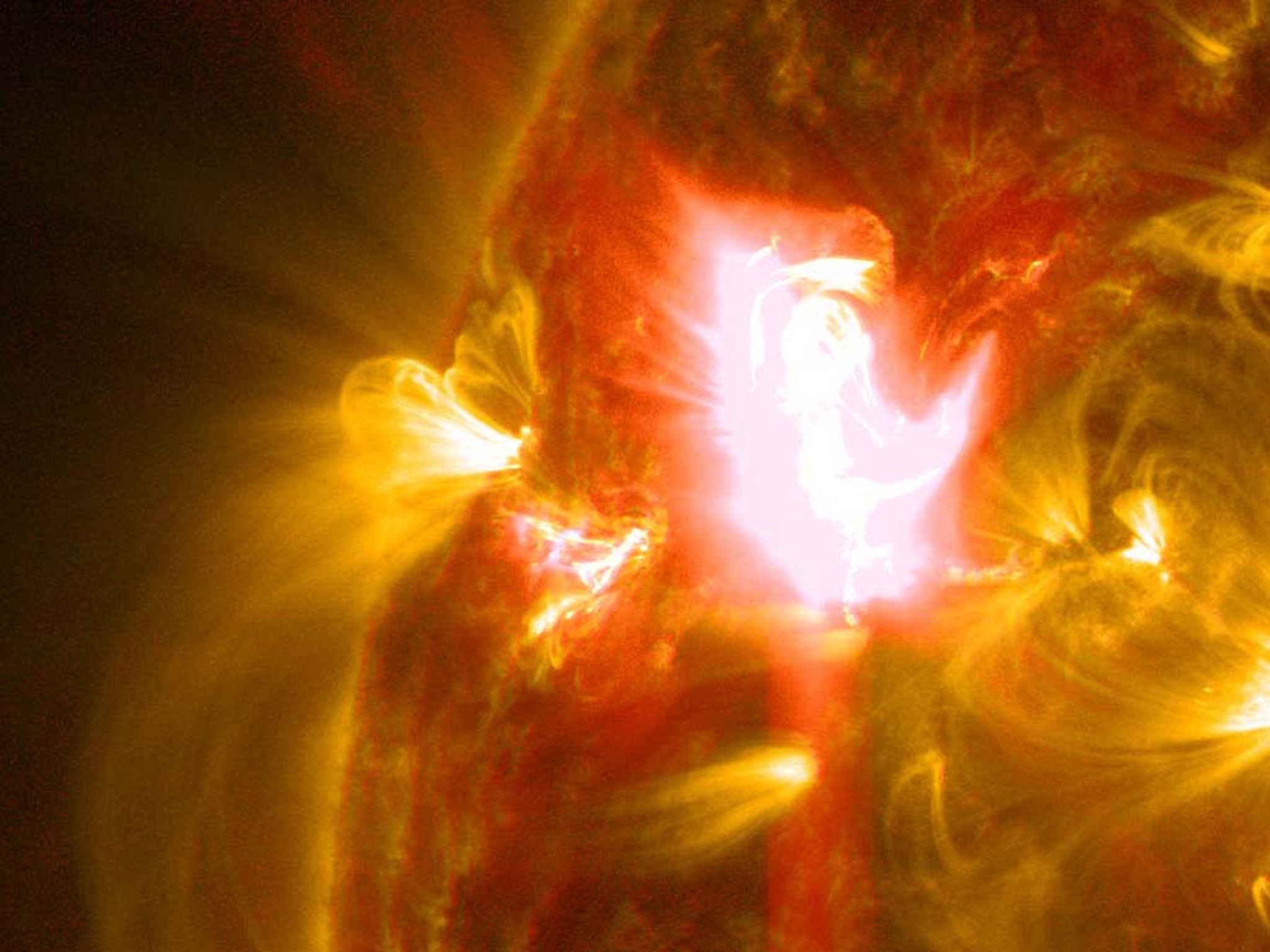Solar flare captured in incredible Nasa footage
The burst of radiation appear as sudden moments of brightness in the footage

Your support helps us to tell the story
From reproductive rights to climate change to Big Tech, The Independent is on the ground when the story is developing. Whether it's investigating the financials of Elon Musk's pro-Trump PAC or producing our latest documentary, 'The A Word', which shines a light on the American women fighting for reproductive rights, we know how important it is to parse out the facts from the messaging.
At such a critical moment in US history, we need reporters on the ground. Your donation allows us to keep sending journalists to speak to both sides of the story.
The Independent is trusted by Americans across the entire political spectrum. And unlike many other quality news outlets, we choose not to lock Americans out of our reporting and analysis with paywalls. We believe quality journalism should be available to everyone, paid for by those who can afford it.
Your support makes all the difference.Nasa’s Solar Dynamics Observatory has released incredible footage of a flare erupting from the sun.
The powerful bursts of radiation appear in the clip as sudden, swirling, bursts of brightness. Captured on 2 April 2014, the flares reached their peak at 15:05 GMT, according to the space agency.
“The image shows the flare in a blend of two wavelengths of extreme ultraviolet light: 131 Angstroms and 171 Angstroms, colorized in yellow and red, respectively,” explained Nasa on its website.
The space agency confirmed that the solar flares were classed at M6.5, or mid-level. The strongest flares are labelled X Class, and are 10 times more powerful than Wednesday’s eruption.
The ‘M’ corresponds to the strength of the flare, with an ‘M2’ being twice as intense as an M1, an M3 is three times as intense, according to Nasa.
The agency said that the explosions are not harmful to humans as they cannot penetrate the Earth’s atmosphere.
However, if intense enough, the clouds of electrons, ions and atoms that are shot into the Earth’s atmosphere during solar flares can sometimes disrupt GPS and communications signals, including mobile phone service.
The effects usually take around a day or so to materialise.
Join our commenting forum
Join thought-provoking conversations, follow other Independent readers and see their replies
Comments